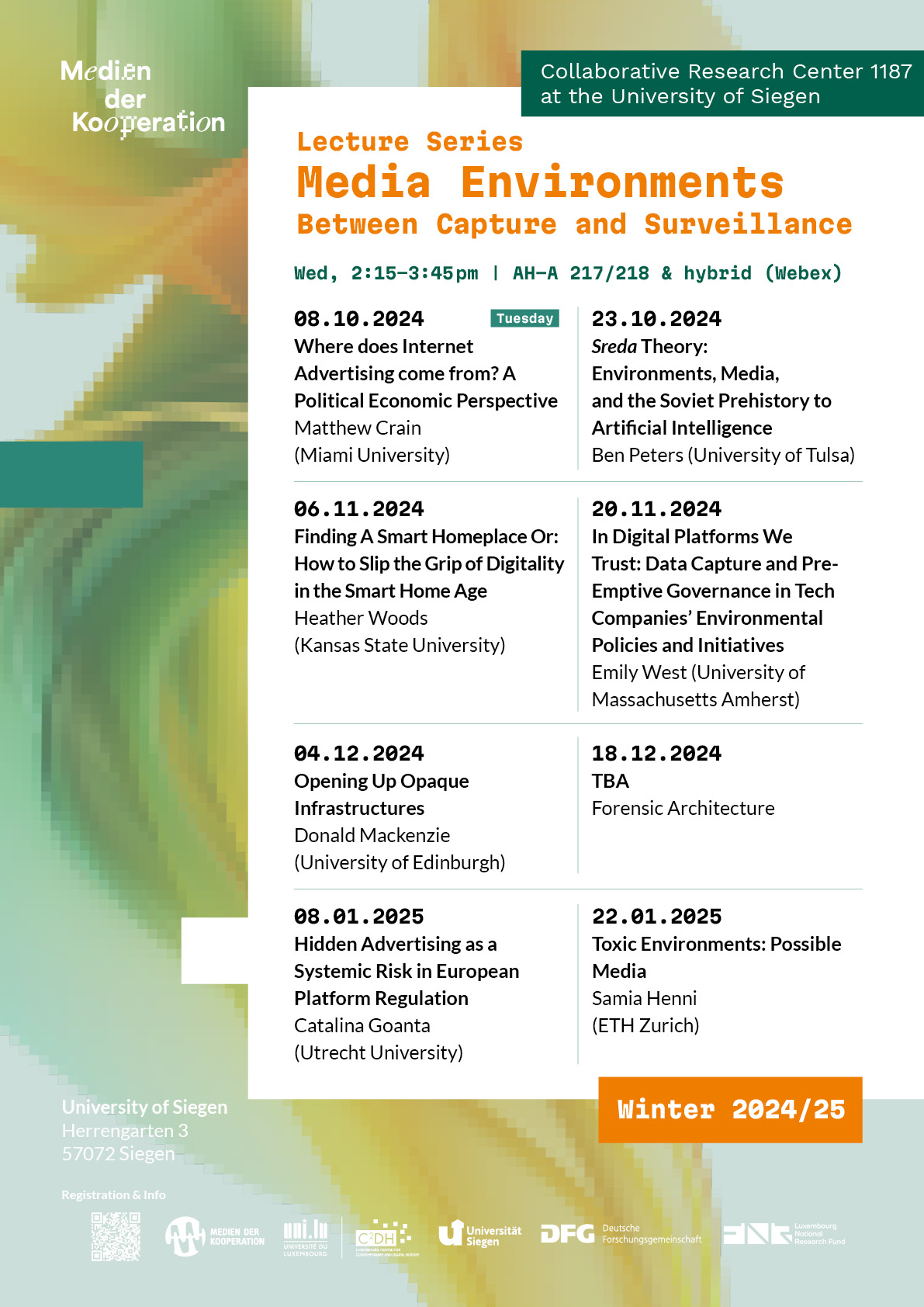
How and at what price did media environments become data-intensive sensing machines? Both the historical and current equipping and upgrading of devices, bodies and environments with sensors is accompanied by new practices of data processing and surveillance. Media and data practices of sensing, monitoring, registering/identifying, and classifying abound in largely opaque digital infrastructures. In addition to new capture logics based on the grammatization of user actions (and the capture of the whole Web by AI tools) there are also procedures and practices of sensory measurement, recording and observation.
What new environments have emerged from practices of (everyday, and often banal) surveillance? How do co-operation and regulation as well as forms of resistance unfold in surveilled publics and data economies? What kind of aesthetics characterizes these organized environments? We envision this lecture series as a praxeological and interdisciplinary endeavor, in which we enquire into the scales of co-operation that make media environments materialize. Thus we specifically welcome critical grounded approaches which follow capture and surveillance step by step to analyze their constitutive role for environments and their data-based sensory mediation.
A Joint Lecture Series
CRC Media of Cooperation, Siegen /
Luxembourg Centre for Contemporary and Digital History (C²DH)
- Dozent/in: Sebastian Gießmann
- Dozent/in: Daniel Robert Tipping
- Dozent/in: Katharina Zimmer-Lachmann